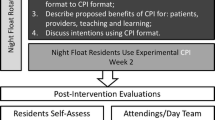Abstract
OBJECTIVE: To determine whether physicians at a general internal medicine clinic spend more time with non-Englishspeaking patients.
DESIGN: A time-motion study comparing physician time spent with non-English-speaking patients and time spent with English-speaking patients during 5 months of observation. We also tested physicians’ perceptions of their time use with a questionnaire.
SETTING: Primary care internal medicine clinic at a county hospital.
PATIENTS/PARTICIPANTS: One hundred sixty-six established clinic patients, of whom 57 were non-English speaking and 109 were English speaking, and 15 attending physicians and 8 third-year resident physicians.
MEASUREMENTS AND MAIN RESULTS: Outcome measures included total patient time in clinic, wait for first nurse or physician contact, time in contact with the nurse or physician, physician time spent on the visit, and physician perceptions of time use with non-English-speaking patients. After adjustment for demographic and comorbidity variables, non-English-speaking and English-speaking patients did not differ on any time-motion variables, including physician time spent on the visit (26.0 vs 25.8 minutes). A significant number of clinic physicians believed that they spent more time during a visit with non-English-speaking patients (85.7%) and needed more time to address important issues during a visit (90.4%), (both p<.01). Physicians did not perceive differences in the amount they accomplished during a visit with non-English-speaking patients.
CONCLUSIONS: There were no differences in the time these physicians spent providing care to non-English-speaking patients and English-speaking patients. An important limitation of this study is that we were unable to measure quality of care provided or patients’ satisfaction with their care. Physicians may believe that they are spending more time with non-English-speaking patients because of the challenges of language and cultural barriers.
Similar content being viewed by others
References
Woloshin S, Bickell NA, Schwartz LM, et al. Language barriers in medicine in the United States. JAMA. 1995;273:724–8.
US Bureau of the Census. Statistical Abstract of the US Census. 115th ed. Washington, DC: US Bureau of the Census; 1995.
Charlson ME, Pompei P, Ales KL, MacKenzie CR. A new method of classifying prognostic comorbidity in longitudinal studies: development and validation. J Chron Dis. 1987;40:373–83.
Deyo RA, Cherkin DC, Ciol MA. Adapting a clinical comorbidity index for use with ICD-9CM administrative databases. J Clin Epidemiol. 1992;45:613–9.
Ahmad WIU, Baker MR, Kernohan EEM. General practitioners’ perceptions of Asian and non-Asian patients. Fam Pract. 1991;8:52–6.
Brod M, Heurtin-Roberts S. Older Russian émigrés and medical care. West J Med. 1992;157:333–6.
Wheat ME, Brownstein H, Kvitash V. Aspects of medical care of Soviet Jewish émigrés. West J Med. 1983;139:900–4.
Barker JC. Cultural diversity—changing the context of medical practice. West J Med. 1992;157:248–54.
Chester B, Holtan N. Working with refugee survivors of torture. West J Med. 1992;157:301–4.
Clinton-Davis L, Fassil Y. Health and social problems of refugees. Soc Sci Med. 1992;35:507–13.
Castillo R, Waitzkin H, Ramirez Y, Escobar JI. Somatization in primary care, with a focus on immigrants and refugees. Arch Fam Med. 1995;4:637–46.
Brodsky B. Mental health practices of Soviet Jewish immigrants. Health Soc Work. 1988;13:130–6.
Putsch RW III. Cross-cultural communication: the special case of interpreters in health care. JAMA. 1985;254:3344–8.
Shimada J, Jackson JC, Goldstein E, et al. Strong medicine: Cambodian views of medicine and medical compliance. J Gen Intern Med. 1995;10:369–74.
Waitzkin H. On studying the discourse of medical encounters: a critique of quantitative and qualitative methods and a proposal for reasonable compromise. Med Care. 1990;28:473–88.
Berlowitz DR, Rosen AK, Moskowitz MA. Ambulatory care case mix measures. J Gen Intern Med. 1995;10:162–70.
Kravitz RL, Greenfield S, Rogers W, et al. Differences in the mix of patients among medical specialties and systems of care: results from the Medical Outcomes Study. JAMA. 1992;267:1617–23.
Marcos LR, Urcuyo L, Kesselman M, et al. The language barrier in evaluating Spanish-American patients. Arch Gen Psychiatry. 1973;29:655–9.
Marcos LR. Effects of interpreters on the evaluation of psychopathology in non-English-speaking patients. Am J Psychiatry. 1979;136:171–4.
Ebden P, Carey OJ, Bhatt A, et al. The bilingual consultation. Lancet. 1988;1:347.
Vasquez C, Javier RA. The problem with interpreters: communicating with Spanish-speaking patients. Hosp Commun Psychiatry. 1991;42:163–5.
Baker DW, Parker RM, Williams MV, et al. Use and effectiveness of interpreters in an emergency department. JAMA. 1996;275:783–8.
Manson A. Language concordance as a determinant of patient compliance and emergency room use in patients with asthma. Med Care. 1988;26:1119–28.
Tocher TM, Larson E. Quality of diabetes care for non-English-speaking patients: a comparative study. West J Med. 1998;6:504–11.
Frayne SM, Burns RB, Hardt EJ, et al. The exclusion of non-English-speaking persons from research. J Gen Intern Med. 1996;11:39–43.
Author information
Authors and Affiliations
Additional information
Dr. Tocher performed this research while serving as a National Research Service Award clinical fellow at the University of Washington under grant PHS 5T32 PE 1000 2.
Rights and permissions
About this article
Cite this article
Tocher, T.M., Larson, E.B. Do physicians spend more time with non-english-speaking patients?. J GEN INTERN MED 14, 303–309 (1999). https://doi.org/10.1046/j.1525-1497.1999.00338.x
Issue Date:
DOI: https://doi.org/10.1046/j.1525-1497.1999.00338.x




